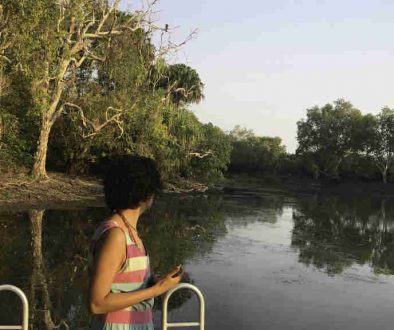Restoring Sexual Safety for Survivors (Part 3 of 3)
Safety plays an important role not only for survivors but for all human beings. Only when we feel safe, do we start to open up and trust the world. When we are not safe, we think of others as opponents. Communities and bond cannot flourish when people are feeling unsafe.
We have looked at physical safety in Restoring Physical Safety for Survivors (Part 1 of 3), and emotional safety in Restoring Emotional Safety for Survivors (Part 2 of 3). Today, our focus is on sexual safety.
Imagine that you come to the bed; your partner comes to the bed too. They smile at you and ask you how are you doing. You start chatting. Then they ask you “May I kiss you?”
Would that shock you? Asking permission to be kissed. What kind of world have you walked in to?
What if they say “Tonight, I don’t want to do anything that may cross your boundaries. What would you like me to do to please you?”
Would that shock you too?
Our society conditions us to believe that regular or committed partners don’t need to seek consent when having sex. That it is automatically assumed that they will have sex together and that if one person says “no” then they are doing something wrong.
The reality is quite different. Isn’t? We, as human beings, go through various emotions and some days we may not want to be sexual – we may just want cuddles. Other times, it’s all about raw sex. Every moment is different; every interaction is different. Unless you talk about it, you just won’t know.
And do you know the biggest thing that is in the way for this communication to occur? It’s Shame.
Human beings have shamed sex for centuries and when religions came into existence, we have since found so many more ways to shame sex.
We shame sex when men want it – “Men just want a release, don’t they?”
We shame sex when women want it – “Good women don’t talk about wanting sex too much. If they do, they must be sluts”
We shame sex when men don’t want it – “He is not being a man”
And we shame sex when women don’t want it – “It’s her duty, isn’t it?”
So what do we do to handle this shame? We avoid it! Not by being celibate but by having sex and making it about the climax and personal pleasure rather than about the connection and communication between the two.
It was a few years ago – I was in a relationship and even though we loved each other, sex was just not what I wanted often or enjoyed very much. There was a lot of communication between us but it was mainly around him letting me know that I wasn’t normal. That he was a man and that’s how men are – they want sex and if I didn’t want it, there was something wrong with me.
So I did it and tried to enjoy but mostly, I thought about laundry, cleaning and other chores that I had to do while I moaned and tried to be with him.
Years later, I realised that it was a classic example of how we humans deal with shame. We pretend! He lost himself in the “chase for climax” and I lost myself by living outside my body.
In my search to fix myself, I got involved with Tantra. I learned to accept myself as who I was and started to uncover my own womanhood and my own sexuality. For the first time, I started meeting men who weren’t chasing a climax. They were more interested in the connection rather than the End Goal. My views about sex started to change.
My next significant relationship was very different from the ones in the past. His presence allowed me to be present too. The time stood still because there was no chase; there was no strong inclination to get anywhere during sex.
For the first time, I started asking myself things like “what do I want?” and “how do I achieve pleasure?”. The letting go of the “chase for climax” resulted in more climaxes for both of us. And it was all possible because I felt safe. I knew that my voice was heard; I knew that my consent was important and for him, mutual respect was a crucial ingredient for pleasure.
It’s really a strange paradox – when you let go of any need to get anywhere, you get somewhere. When you are okay with the journey, the journey becomes ecstatic and climaxes more extraordinary.
In my experience and observation, Consent and Boundaries Conversation forms the basis on which you could build your sexual life, no matter who you are with. For survivors, this conversation becomes even more important because, through this conversation, partners can build respect and trust and start to work with each other in a harmonious way.
As a survivor, when my partner asks me “May I put my arms around you?” – it makes me feel validated; it makes me feel respected and it creates a space for me where I can say No. If no one asks me a question, I never have the opportunity to say anything.
There are many formal and informal ways to have the consent and boundaries conversation but there are some crucial points that need to be covered.
If you are a survivor, you can start this conversation yourself. And if you are a partner, you can encourage this conversation. It may be awkward initially but I can tell you, nothing creates a better safe space than when you seek permission.
Consent and Boundaries Conversation
Establish Connection
This forms the basis, on which the whole experience resides. This connection can be as simple as asking “How are we doing?” or just cuddling or talking about the day. Whatever brings you two together and be together.
Establish Boundaries
What are the no-go zones today? Maybe there are certain things that really trigger you or your partner, it’s important to establish what these are and work out how to support each other in case that happens.
This is also a good time to talk about what potentially can happen and if all parties are ok with it. Just because you are kissing your partner and they are responding, it doesn’t mean that they want to engage in penetrative sex. It’s always a good idea to seek permission and respect the Noes with grace.
Establish “Stop” mechanisms
If you are a survivor or the partner of a survivor, it’s possible that a sexual act may trigger one or both of you. It is a good idea to establish what word can be used, which will stop all activity. “Stop” generally doesn’t work because many times, you may use the word but actually not mean it. “Red” is one of the ones I use and it is very clear that all activity must stop when I use the word. You could create your own word.
It is also a good idea to find out how you can support each other when one of you uses the stop mechanism. You may need to support your partner and if you haven’t had this conversation before, you may not know how to support them.
Establish “after-care” protocols
What does each of you need afterwards? Some people like hugs and cuddles. Others want some conversation and others have their own way to ending the connection. Whatever it may be, you can’t read your partner’s mind so it’s better to talk about it so both of can enjoy each others’ company even after the sexual act has ended.
I know it may sound a bit weird to you to have this conversation but I can tell you that these conversations changed my life and the lives of many who I have worked with and partnered with.
I have been able to establish my own boundaries and respect the boundaries of the other and when I do, the sexual experiences together are out of this world. I have been able to heal in ways that I didn’t think was possible. My trust in my sexuality was restored; I was able to enjoy sex with my partner without bringing in the triggers from the past and I felt fully seen and respected in my presence.
This was truly the most beautiful gift that the universe has provided to me.
I invite you to try



